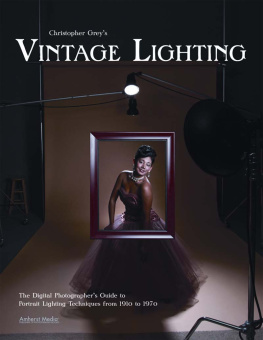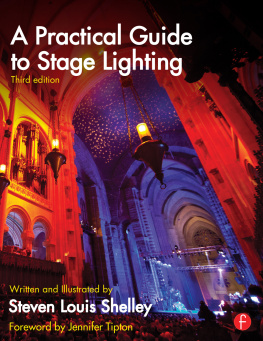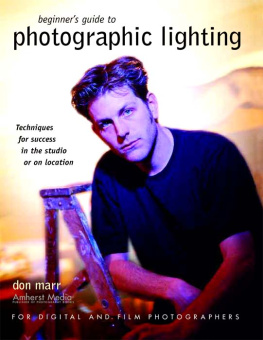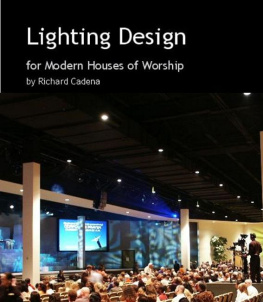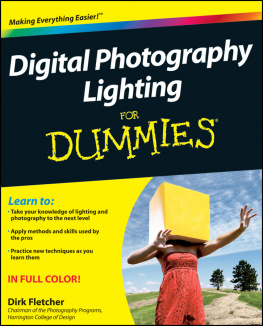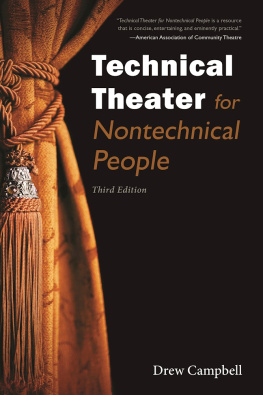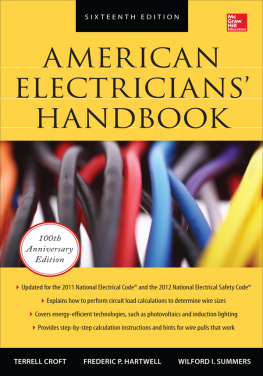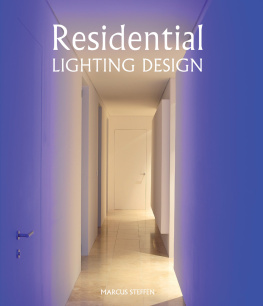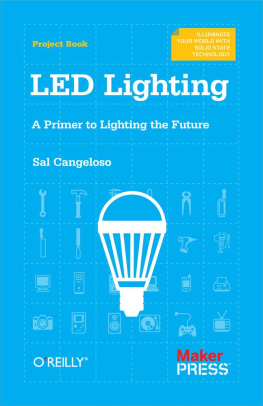Francis Reid - The Stage Lighting Handbook
Here you can read online Francis Reid - The Stage Lighting Handbook full text of the book (entire story) in english for free. Download pdf and epub, get meaning, cover and reviews about this ebook. year: 2002, publisher: Routledge, genre: Romance novel. Description of the work, (preface) as well as reviews are available. Best literature library LitArk.com created for fans of good reading and offers a wide selection of genres:
Romance novel
Science fiction
Adventure
Detective
Science
History
Home and family
Prose
Art
Politics
Computer
Non-fiction
Religion
Business
Children
Humor
Choose a favorite category and find really read worthwhile books. Enjoy immersion in the world of imagination, feel the emotions of the characters or learn something new for yourself, make an fascinating discovery.

- Book:The Stage Lighting Handbook
- Author:
- Publisher:Routledge
- Genre:
- Year:2002
- Rating:3 / 5
- Favourites:Add to favourites
- Your mark:
- 60
- 1
- 2
- 3
- 4
- 5
The Stage Lighting Handbook: summary, description and annotation
We offer to read an annotation, description, summary or preface (depends on what the author of the book "The Stage Lighting Handbook" wrote himself). If you haven't found the necessary information about the book — write in the comments, we will try to find it.
The Stage Lighting Handbook — read online for free the complete book (whole text) full work
Below is the text of the book, divided by pages. System saving the place of the last page read, allows you to conveniently read the book "The Stage Lighting Handbook" online for free, without having to search again every time where you left off. Put a bookmark, and you can go to the page where you finished reading at any time.
Font size:
Interval:
Bookmark:
The Stage Lighting Handbook
FRANCIS REID
The Stage Lighting Handbook

Routledge New York
Sixth edition published in North America in 2001 by
Routledge
711 Third Avenue
New York, NY 10017
www.routledge-ny.com
Routledge is an imprint of the Taylor & Francis Group
ISBN 0-87830-147-X
ISBN 978-0-87830-147-8
Originally published by
A & C Black (Publishers) Limited
37 Soho Square, London W1D 3QZ
2001, 1976, 1982, 1987, 1992, 1996 Francis Reid
Front cover: WYSIWYG images and renders by
Mike Falconer of A.C. Lighting Ltd
Back cover photograph: ETC
First edition 1976: Pitman Publishing Limited
Second edition 1982, third edition 1987,
fourth edition 1992 and fifth edition 1996:
A & C Black (Publishers) Limited.
Cataloguing-in-Publication data is available from
the Library of Congress.
All rights reserved. No part of this publication may be
reproduced in any form or by any means graphic,
electronic or mechanical, including photocopying,
recording, taping or information storage and retrieval
systems without the written permission of Routledge.
It is easy to be poetic about light in the theatre, and a great deal of lip service is paid to its possibilities. Certainly, lighting techniques have shown a tremendous development in the last thirty-five years, and there are now a large number of lighting specialists. But no theatre, whether it be amateur or professional, can thrive on over-specialisation. To twist an old phrase, every theatre person must be a Jack of all trades and a master of one.
A jack of all trades should not dabble in electricity but every theatre person should know something about light. Therefore, this is not a book about electricity, it is a book about light.
If light is an actors environment, then every actor should have a basic understanding of light in the theatre, should think about how the production is trying to use light and how that light can help to project script and actor to the audience. Every designer, whether of scenery, costumes or properties, should be able to visualise the finished product under stage lighting conditions.
But theories about the Art of lighting are useless without some know-ledge of the Craft: the way in which the desirable becomes the possible. Every user of light, every director, every designer, every actor, should have some knowledge of what is technically possible not in terms of electricity, but in terms of light.
In theatre, there is no positive, clear-cut, good or bad, right or wrong. It is a very subjective art who, for example, shall be bold enough to define a good actor? The lighting designer, in the midst of rehearsal pressures, might be tempted to equate good acting with the ability to find light. Hardly a universal definition of good acting!
This book cannot, and does not, set out to lay down objective standards for good lighting. It merely discusses some of the possibilities of lighting and how these can be turned into reality under practical stage conditions.
In the twenty-five years since the first edition of this book was published, there have been considerable developments in lighting instruments, colour filters and control systems. In little over a decade, automated spotlights have become commonplace. The fifth edition prediction that, It is not difficult to foresee design computers talking directly to control desks and focusing lights! has already become established reality.
But the basic facts of lighting do not change. The underlying philosophy remains the same: it aint what you put, its the where that you put it. Improvements in the tools of the lighting design trade do not automatically lead to improvements in the quality of the lighting design. Efficient robust spotlights and sophisticated micro-processor controls may speed up the lighting process. They may reduce or even eliminate some of the old problems, so that the lighting designer is free to concentrate on visual ends rather than technical means. But unless the right type of lighting instrument, with the right colour filter, is hung in the right position and pointed at the right part of the stage, any expenditure on the latest spotlights and computer control desks will be in vain.
Consequently, the equipment chapters in subsequent editions have been amended to take account of new developments, while the chapters dealing with the principles of lighting design and lighting management have been expanded and clarified.
The author, in his continued attempts to find ways of expressing a visual medium in words, has been helped by his colleagues in the professional theatre and by the many students with whom he has explored lightings contribution to the performance environment. To all his students over the years at the Central School of Art and Design (now Central St Martins), the Royal Academy of Dramatic Art, the National Theatre School of Canada and in many parts of the world (particularly Australia, Cyprus, Germany, Hong Kong, India, Indonesia, Korea, Malaysia, Pakistan, Singapore, Spain, Sweden, Thailand and New Zealand) he once again offers his sincere thanks for the continuing way in which they have sharpened his wits by asking searching questions.
For the illustrations, the author is indebted to Strand Lighting and their magazine TABS, the technical theatre review CUE, AC Lighting. Arri, Avolites, Cast Lighting, Clay Paky, DHA, ETC, Mike Falconer, Nigel Hollowell-Howard, JEM, Lighting Innovation, Lightworks, Optikinetics, Ludwig Pani, Martin, Northern Light, Rosco, Selecon, Skyhigh Stage FX, James Thomas Engineering, Vari-Lite, White Light, Norman Adams of Aberdeen District Council Publicity Department, W.G. Crisp, James Twynam, Barrie West, Wybron and all the technicians who allowed their work to be invaded by the authors camera.
The lighting image on the cover was computer-generated by Mike Falconer, using WYSIWYG software.
____________________
Stage lighting is not an exact science. Rules are few, if indeed there are any. Provided that the lighting works with the other elements in the production to enable author and actors to communicate with their audience, virtually anything goes. But even when that going is done by a particularly extreme anything, the resultant lighting will usually be a specific combination of certain possible roles that light can play in a production.
What can lighting contribute to a production? What are our aims when we employ light on the stage?
Communication between actor and audience depends on sound and sight. Actors' complete bodies, but especially eyes and mouth, are their means of communication and must be clearly visible if a character is to be projected. Everything in theatre interacts and light is closely related to sound: actors who are difficult to see will usually be difficult to hear.
So the first basic requirement of stage lighting is sufficient illumination to achieve positive visibility. But how bright is that? Light is a measurable quantity but photometric measurements have little place on the stage: one of the indications of the approach of theatrical doomsday will be the appearance of a lighting designer with a photometer. Theatre is much too much of an interplay of mind and matter to be reduced to precise physical measurements. We must have confidence in the judgments of our senses: if it looks right then it is right.
Unless the auditorium is very small, perhaps up to about ten rows, the amount of light cannot be ideal for all seats. If there is enough light for the front row, there will be insufficient for the back; if the amount is correct for the back row, it will be over-bright at the front. This assumes that all members of the audience have identical eyesight: which they certainly do not!
Next pageFont size:
Interval:
Bookmark:
Similar books «The Stage Lighting Handbook»
Look at similar books to The Stage Lighting Handbook. We have selected literature similar in name and meaning in the hope of providing readers with more options to find new, interesting, not yet read works.
Discussion, reviews of the book The Stage Lighting Handbook and just readers' own opinions. Leave your comments, write what you think about the work, its meaning or the main characters. Specify what exactly you liked and what you didn't like, and why you think so.

